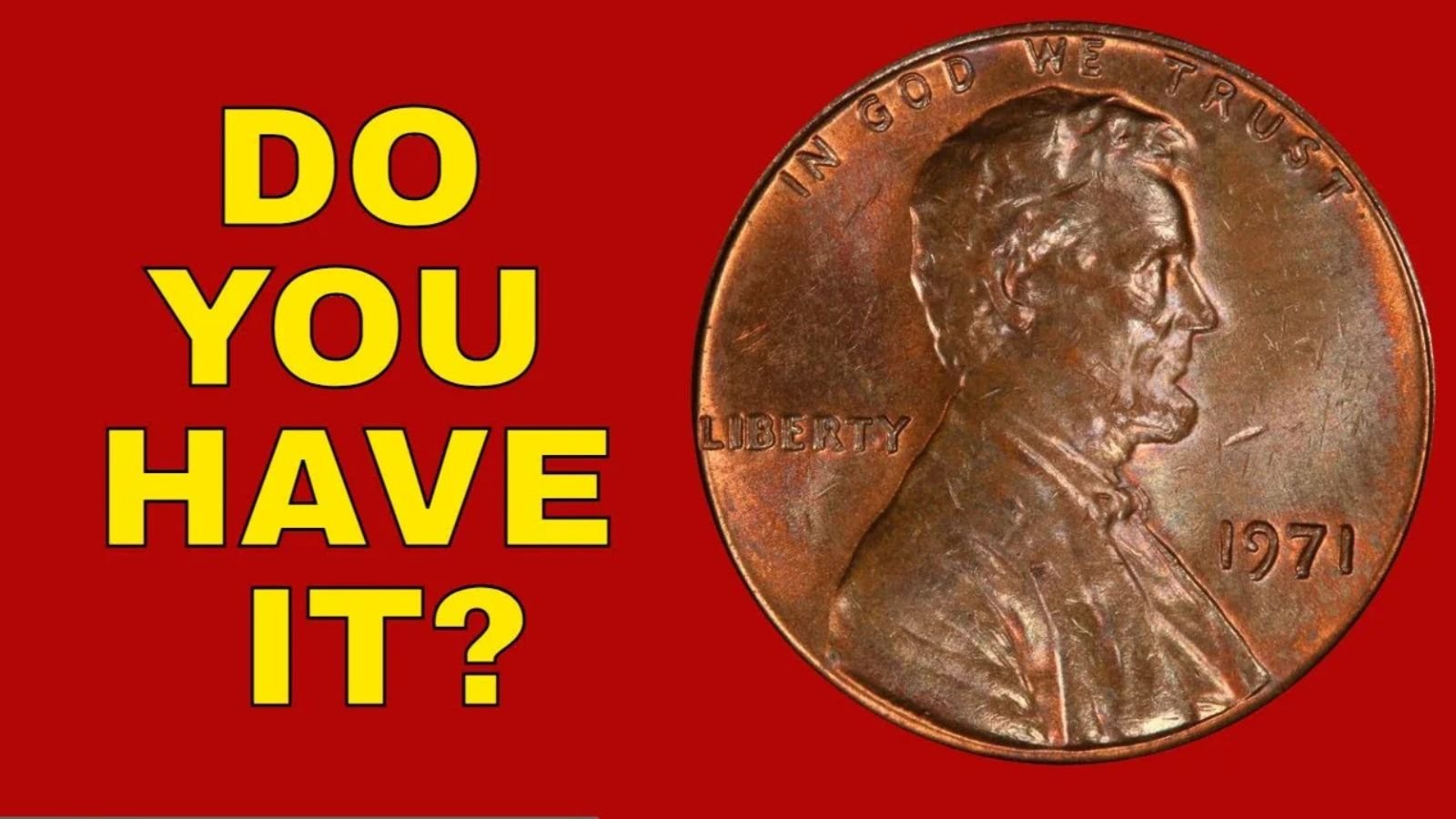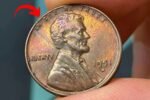It might sound unbelievable, but a seemingly ordinary coin—the iconic Lincoln Wheat Penny—could potentially be worth a life-changing $21 million. That’s right, a small copper coin that once jingled in the pockets of everyday Americans may now carry a value that rivals high-end real estate, luxury cars, and even small private islands.
This isn’t a tall tale or urban legend. It’s rooted in a fascinating mix of American history, minting anomalies, and the growing passion of coin collectors worldwide. And perhaps the most thrilling part? That rare Lincoln Wheat Penny could still be sitting in a forgotten change jar, passed unknowingly from hand to hand across generations.
Let’s dive deep into what makes the Lincoln Wheat Penny such a prized possession, why one particular version of it is potentially worth $21 million, and how you can check if you might unknowingly own one.
The Rare Bicentennial Quarter Valued at $2.5 Billion, Still in Circulation
A Brief History of the Lincoln Wheat Penny
The story of the Lincoln Wheat Penny begins in 1909 when it was first minted to commemorate the 100th birthday of President Abraham Lincoln. It became the first U.S. coin to feature a real person rather than Lady Liberty, and its design was revolutionary at the time.
On the obverse side, it carries a profile of President Lincoln. On the reverse, two stylized wheat ears frame the words “ONE CENT”—a design that gives the coin its popular nickname, the Lincoln Wheat Penny. This design continued until 1958, after which the back of the penny was changed to feature the Lincoln Memorial.
While most Lincoln Wheat Pennies produced during this nearly 50-year run are worth only face value or slightly more depending on condition and rarity, a few exceptional pieces have taken on legendary status in the numismatic world. These are the pennies that fuel dreams and drive collectors to comb through every coin they come across.
What Makes One Lincoln Wheat Penny Worth $21 Million?
Let’s cut to the chase—why is one version of this humble penny said to be worth a jaw-dropping $21 million?
The answer lies in a rare and mysterious minting error during the early 1940s, specifically during the height of World War II. In 1943, as part of the U.S. government’s war effort, the Mint made a drastic change: instead of using copper for pennies, they began using zinc-coated steel to conserve copper for military supplies.
However, in an unexpected twist, a few copper planchets (blanks intended for 1942 pennies) were accidentally left in the minting machines and struck with the 1943 date. These rare copper 1943 Lincoln Wheat Pennies are among the most famous error coins in existence. Only a handful have ever been found, and one even sold at auction for over $1 million.
But the coin believed to be worth $21 million is a potential one-of-a-kind anomaly—possibly a copper 1943 penny with a double die error, or a 1943-D struck in bronze with another unusual variation. Its existence is rumored, yet unconfirmed, making it one of the most elusive treasures in American coinage.
The value comes from a combination of extreme rarity, historical significance, collector demand, and the mystery that surrounds it. If such a coin exists, its value could skyrocket beyond imagination, especially in a hot collectibles market.
Could You Have This Million-Dollar Lincoln Wheat Penny?
As incredible as it sounds, yes—you might actually possess this once-in-a-lifetime coin and not even realize it.
One of the most exciting parts of this story is the possibility that this rare Lincoln Wheat Penny is still in circulation or sitting in someone’s old collection. It’s very possible that the coin was handed out as change decades ago and has quietly passed from one pocket to another ever since.
It could be tucked away in a dusty coin jar, a childhood piggy bank, or a long-forgotten roll of pennies in your attic. The average person doesn’t think twice about the change they receive, so this coin could easily slip through the cracks.
Here’s how to find out if you might be the lucky owner:
How to Identify the Ultra-Rare Lincoln Wheat Penny
If you’re ready to play treasure hunter, here are the key details to keep in mind when examining your pennies:
1. Look for the Year 1943
Start by checking the date. While most 1943 pennies are made of steel and appear silver-colored, any 1943 penny that looks copper or reddish-brown deserves immediate attention.
2. The Magnet Test
Genuine 1943 steel pennies will be magnetic due to their iron content. If your 1943 penny doesn’t stick to a magnet, it might be made of copper—a rare and valuable error.
3. Inspect for Errors
Look closely at the coin for any odd features, such as doubled lettering (known as a double die error), unusual textures, or off-center stamping. These features can add significant value.
4. Weigh the Coin
A regular steel 1943 penny weighs around 2.7 grams, while a copper penny weighs approximately 3.11 grams. A simple digital scale can help you determine what you’ve got.
5. Get a Professional Opinion
If you believe you’ve found something unusual, do not attempt to clean or alter the coin. Instead, bring it to a reputable coin dealer, numismatist, or grading service like PCGS or NGC. They have the expertise to confirm authenticity and potential value.
The Emotional and Cultural Significance of the Lincoln Wheat Penny
Beyond the financial reward, the Lincoln Wheat Penny holds deep cultural significance. For many collectors, it’s more than just a coin—it’s a tangible link to American history. These pennies circulated during the Great Depression, two world wars, and the civil rights movement. Holding one is like holding a tiny piece of the past.
And when a rare version of the Lincoln Wheat Penny surfaces, it sparks a wave of excitement not only for its monetary worth but also for its historical value. A rare error penny like the rumored $21 million version is essentially a living relic—a mistake that became a masterpiece.
Why Collectors and Investors Are Going Crazy for Rare Pennies
The numismatic market has seen a boom in recent years, fueled by rising interest from both collectors and alternative investors. Rare coins, especially those with error histories or unique backstories, are seen as portable assets that blend history, scarcity, and value.
The Lincoln Wheat Penny is a shining example. Its humble origins, iconic design, and the potential for life-altering discoveries make it a magnet for both seasoned collectors and curious beginners.
Coins like the $21 million Lincoln Wheat Penny are rare, but even finding a 1943 bronze cent or a double die 1955 Wheat Penny can yield thousands or even tens of thousands of dollars. That’s why it pays to keep an eye on every coin that crosses your path.
Final Thoughts: Check Your Change—You Might Be Holding History
In a digital world of credit cards and cryptocurrencies, it’s easy to overlook the small change jingling in your pocket or purse. But stories like this remind us that incredible things can come in small, copper-colored packages.
The Lincoln Wheat Penny is more than just a relic—it’s a symbol of American resilience, artistic craftsmanship, and the delightful unpredictability of life. And with the possibility of a $21 million version still unaccounted for, who knows what treasures might be hiding in plain sight?
So the next time you receive a penny, don’t be so quick to toss it into the coin jar. Flip it over. Look at the date. Hold it up to the light. That little piece of metal could rewrite your financial future.
Disclaimer: This article is meant for informational purposes only and does not constitute financial or investment advice. Coin values can fluctuate based on condition, rarity, and market demand. Always consult a professional coin dealer or numismatist before making any buying, selling, or valuation decisions.
Some Important Link
| Telegram Group | Click Here |
| WhatsApp Group | Click Here |
| Home Page | Click Here |














